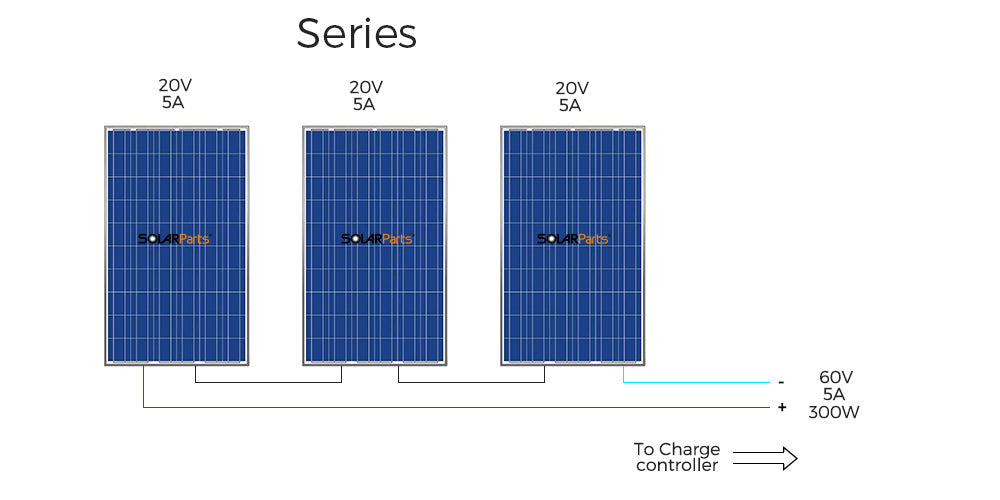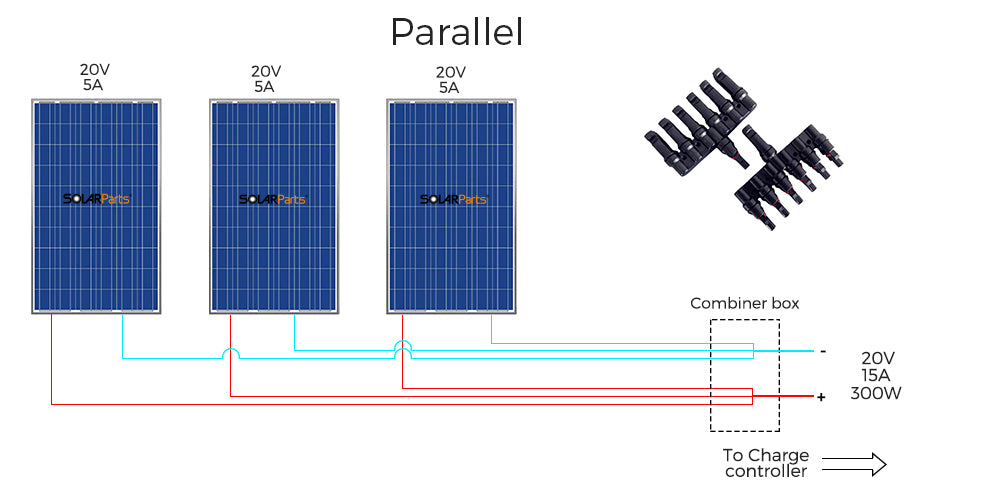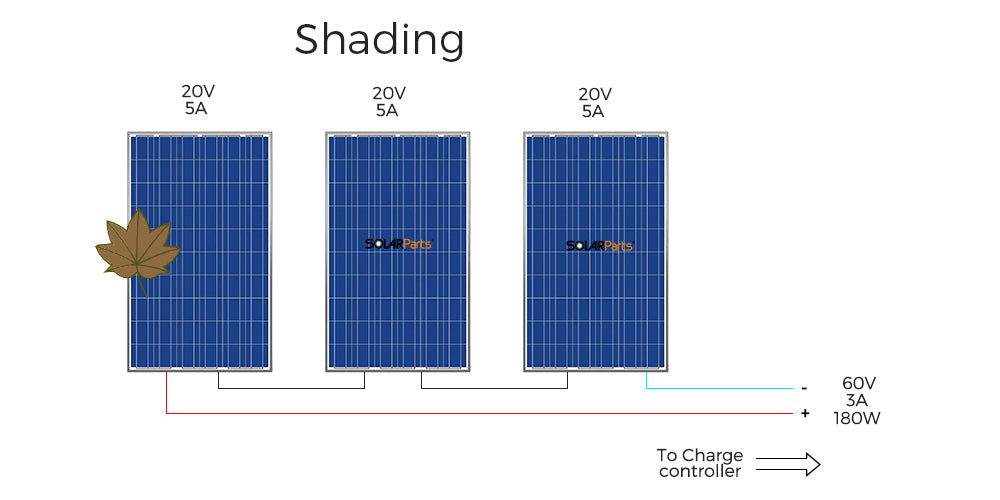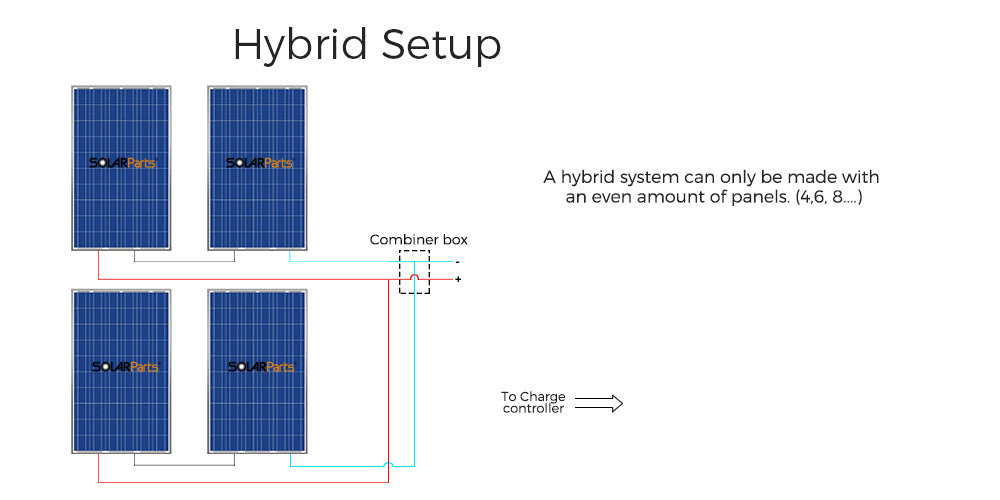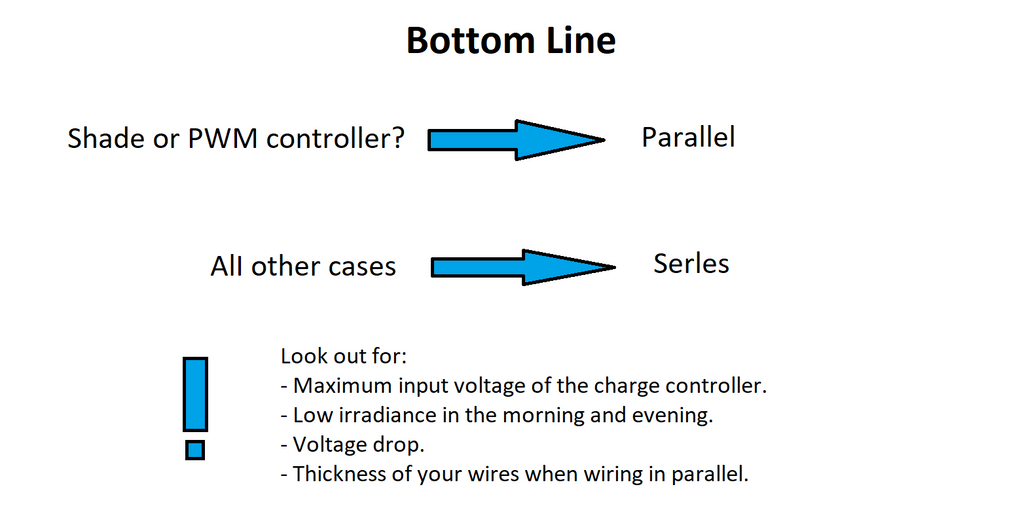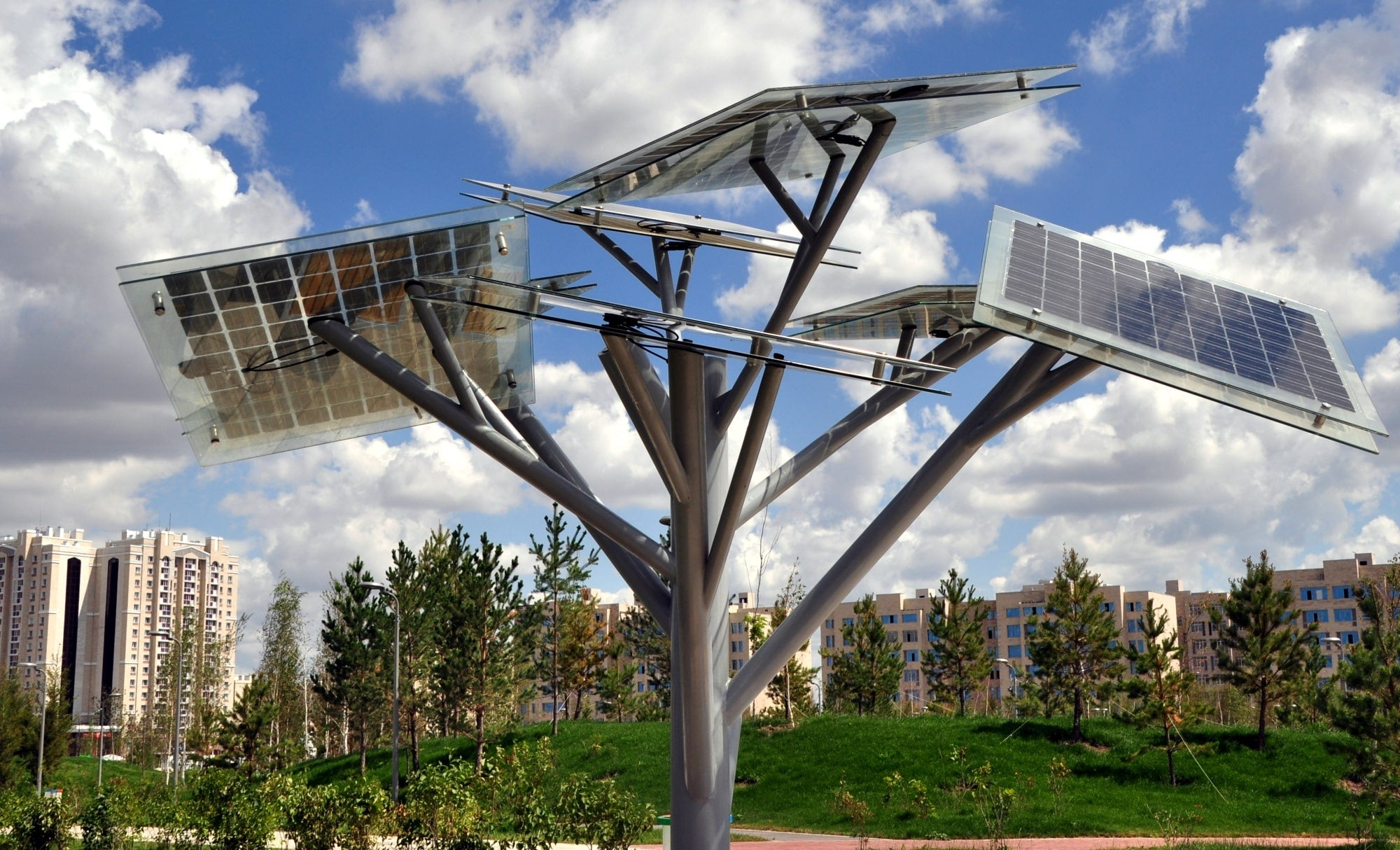What are Solar Panels in Series and How do They Work?
Solar panels connected in series are linked end to end, creating a chain-like configuration. In this setup, the positive terminal of one panel is connected to the negative terminal of the next, increasing the overall voltage of the system.
The current remains the same as that of a single panel. This series connection is ideal when aiming for higher system voltages, such as for grid-tied applications.
What are Solar Panels in Parallel and How do They Work?
In a parallel configuration, solar panels are connected side by side, with the positive terminals connected to each other and the negative terminals likewise. This setup keeps the voltage the same as that of a single panel while increasing the overall current.
Parallel connections are useful when aiming for higher system currents, such as in off-grid or battery charging setups.
Solar Panels in Series vs in Parallel: What's the Difference?
If you want to wire solar panels in series, you can look at this diagram how it's done.
If your wiring in series the volts are added up and the current stays the same.
Let's say each panel is rated at 20 volts and 5 amps that means that the output of this series connection is 60 volts and 5 amps to the charge controller. Make sure the voltage is under the maximum allowed input voltage of your charge controller. This is usually 100 volts for an mppt charge controller.
Now go ahead and created a wiring diagram for connecting these panels in parallel.
In a parallel circuit, all the positive and negative wires go to the combiner box or they are connected via special PV connectors called branch connectors. This will make it easy to do maintenance if you have to remove a panel or add some more to your setup. It should be noted that you have to install a combiner box or branch connectors and make it waterproof.
If you use the same panel at 20 volts and 5 amps each, we get an output to the charge controller at 20 volts and 15 amps.
If you wire in parallel, you need a charge controller that is able to handle the larger input current which will be more expensive. There will also be a minimum starting voltage for the charge controller. Therefore, you must verify that the connection that you are choosing is both able to meet minimum and maximum voltages as well as maximum electrical current input to the charge controller.
If you use a pwm charge controller wiring in parallel is more common because of the limit on input voltage. Always check your wire thickness if you use parallel. Standard wires might not be enough for the amount of current you send through it.
Series vs. Parallel: Which to Choose?
When deciding between series and parallel connections for your solar panels, it's essential to evaluate your specific needs and system requirements. The choice depends on various factors, including voltage and current requirements, power output needs, available space, and component compatibility.
In Series, voltage adds up and Amps stay the same
Advantages:
- Series connections are usually more efficient in low-light conditions.
- Due to higher voltage, series connection can reduce power loss due to long-distance transmission.
Disadvantages:
- The performance of a series configuration is dictated by the worst-performing panel. This means that if one panel is shaded or not operating efficiently, the output of the entire string of panels is reduced.
- The system requires a high-voltage tolerant inverter.
Advantages:
- A major advantage of parallel configuration is that the performance of the other panels is not significantly impacted if one panel is shaded or damaged.
- Lower voltage levels mean that there's less risk of potential dangerous electrical conditions, like arcing.
Disadvantages:
- In a parallel system, if the panels are not exactly the same, the stronger panel will be trying to overcompensate for the weaker panel, which can cause damage and reduce system efficiency.
- More wiring and complex installation is often required in parallel systems.
So, Series vs. Parallel: Which to Choose?
Which to choose depends on your specific circumstances.
*If you have a shade-free environment, a series configuration could be more efficient.
*But if some of your panels are likely to be in the shade at times, a parallel configuration might be a better choice.
*Moreover, it is okay to mix series and parallel solar panels. (Hybrid Setup)
Hybrid Setup
A hybrid setup also called series parallel setup combines series and parallel connections.
By combining both wiring configurations, it is possible to create a solar panel array that meets the voltage and current requirements for your specific application.
For example, if you need a higher voltage, you can connect multiple series strings in parallel, while if you need more current, you can connect multiple parallel strings in series.
This can be useful on a boat if you have a total of four panels place two panels on ports and two on starboard. You would then wire two in series and then combine both of the series strings in parallel.
However, it is important to ensure that the solar panels you are connecting have similar electrical characteristics, such as voltage and current ratings, to prevent mismatches that can lead to reduced system efficiency or even damage to the panels. Additionally, proper fusing and wiring sizing should be used to ensure safe and reliable operation of the solar panel array.
Depending on what you're looking for, each method can have its benefits.
Whether you opt for series or parallel connections, harnessing solar energy brings numerous benefits, including reduced carbon footprint, energy independence, and long-term cost savings. Embrace renewable energy and contribute to a sustainable future.
To learn more about photovoltaic power generation, please follow SOLARPARTS official website:
Twitter: Solarparts Instagram: Solarparts
Tumblr: Solarparts Pinterest: Solarparts
Facebook: Shenzhen Solarparts Inc
Email address: Philip@isolarparts.com
Homepage: www.isolarparts.com



